Nanna: Mesopotamian Moon God, Lord Of Wisdom And Father Of The Gods
Ellen Lloyd - AncientPages.com - Nanna was a Moon God in the mythology of the ancient Near East. He was one of the most important gods in the pantheons of ancient Sumer.
In Sumer, he was worshipped as god Nanna, and his Akkadian name was Su'en or Sin. The name of the Assyrian moon god Sin is often spelled as En-Zu, which means “Lord of Wisdom.”
The origin of the name Nanna and Sin is unknown, but the earliest traces of his name and worship lead to the ancient cities of Ur and Uruk in Sumer.
Nanna Was The Father Of The Gods
God Nanna’s symbol was a bull, the result of the horizontal crescent of the waxing moon appearing similar to the horns of that animal. He is depicted on cylinder seals as an old man with a flowing beard and the crescent symbol.
The Early Dynastic god lists, such as Fara SF 1, reveal that the moon God Nanna was extremely important in the pantheon. His name appears immediately after the four leading gods An, Enlil, Inanna, and Enki.
The impression of the cylinder seal of Ḫašḫamer, ensi (governor) of Iškun-Sin ca. 2100 BC. The seated figure is probably king Ur-Nammu, bestowing the governorship on Ḫašḫamer, who is led before him by a lamma (protective goddess). Sin/Nanna himself is indicated in the form of a crescent. Image credit: wikipedia
Sumerians were skilled ancient astronomers who paid close attention to the movements of various celestial objects. It is believed that Mercury was known since at least Sumerian times roughly 5,000 years ago, where it was often associated with Nabu, the god of writing.
A 5,500-year-old Sumerian star map of ancient Nineveh reveals people in Mesopotamian observed Köfels’ impact event. The Sumerians were naturally also interested in observing the Moon’s phases. So, it’s only natural that Moon God Nanna was closely linked to science and astronomy.
Reconstruction of the Ziggurat of Ur, the main shrine to Nanna, based on the 1939 reconstruction by Leonard Woolley. Image credit: Wikipedia
In ancient texts, Moon God Nanna is often referred to in terms characteristic of the celestial body. He is described as shining or radiant.
Moon God Nanna Was The Father Of Sun God Shamash
God Nanna was married to Ningal (Great Lady), a Goddess of reeds in Sumerian mythology and daughter of Enki and Ningikurga.
God Nanna and Goddess Nigal had three children. One of them was Shamash, the God of Sun, truth, justice, and healing. The other children were Inanna, also known as Ishtar, the Goddess of planet Venus and Ereshkigal, the Goddess of the underworld.
God Nanna and the Sun God Shamash are associated with issuing laws and verdicts, the determination of destinies, and the announcements of omens.
The Moon God And The Mount Sinai Connection
In our article Is Biblical Mount Sinai Located In Har Karkom Where Mesopotamian Moon God Sin Was Worshipped? the question was raised whether Nanna may have been more important than previously thought.
Biblical archaeologist Emmanuel Anati has discovered evidence suggesting that Biblical Mount Sinai was on a site known as Har Karkom in the Negev of Israel. According to Anati, people who lived in Har Karkom during the Early Bronze Age worshipped the Moon God Sin. Many temples were raised in his honor.
The cult of Moon God Nanna spread to many places, and people built temples built in his honor in all the large cities of Babylonia and Assyria.
Written by - Ellen Lloyd – AncientPages.com
Updated on July 28, 2021
Copyright © AncientPages.com All rights reserved. This material may not be published, broadcast, rewritten or redistributed in whole or part without the express written permission of AncientPages.com
Expand for referencesMacleod, Kezip- Legends of Sumer
More From Ancient Pages
-
 Legend Of Milky Way’s Celestial Portal And The Star City From The Bowuzhi By Zhang Hua
Chinese Mythology | Feb 14, 2024
Legend Of Milky Way’s Celestial Portal And The Star City From The Bowuzhi By Zhang Hua
Chinese Mythology | Feb 14, 2024 -
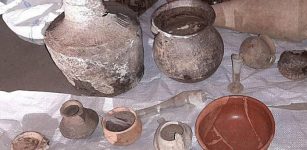 Europol Reports: ‘Millions’ In Stolen Treasures After Busting Crime Gang In Bulgaria – Recovered
Archaeology | Jul 4, 2020
Europol Reports: ‘Millions’ In Stolen Treasures After Busting Crime Gang In Bulgaria – Recovered
Archaeology | Jul 4, 2020 -
 Ancient DNA Reveals How European Skin, Eye, And Hair Color Evolved Over The Past 45,000 Years
DNA | Feb 24, 2025
Ancient DNA Reveals How European Skin, Eye, And Hair Color Evolved Over The Past 45,000 Years
DNA | Feb 24, 2025 -
 Sacred Artifact With Mystical Powers – The Legend – Part 1
Ancient Mysteries | Apr 24, 2019
Sacred Artifact With Mystical Powers – The Legend – Part 1
Ancient Mysteries | Apr 24, 2019 -
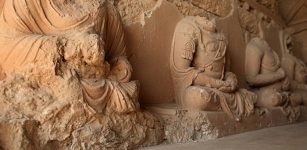 Takshashila: Renowned Learning Center That Attracted Buddhist Masters, Disciples And Students Of The World
Featured Stories | Jul 23, 2016
Takshashila: Renowned Learning Center That Attracted Buddhist Masters, Disciples And Students Of The World
Featured Stories | Jul 23, 2016 -
 Copiale Cipher – Secrets Of Mysterious Coded Manuscript And The Oculist Order
Artifacts | Feb 4, 2019
Copiale Cipher – Secrets Of Mysterious Coded Manuscript And The Oculist Order
Artifacts | Feb 4, 2019 -
 Unravelling The Mystery Of The Ulfberht Sword – An Ancient Viking Artifact Far Ahead Of Its Time
Artifacts | Feb 11, 2014
Unravelling The Mystery Of The Ulfberht Sword – An Ancient Viking Artifact Far Ahead Of Its Time
Artifacts | Feb 11, 2014 -
 Maya Storm God Huracán Taught That When We Damage Nature, We Damage Ourselves
Featured Stories | Oct 4, 2024
Maya Storm God Huracán Taught That When We Damage Nature, We Damage Ourselves
Featured Stories | Oct 4, 2024 -
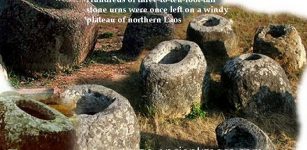 Mysterious Jars In Laos – Long-Lasting Mystery Is Still Unsolved
Archaeology | May 20, 2019
Mysterious Jars In Laos – Long-Lasting Mystery Is Still Unsolved
Archaeology | May 20, 2019 -
 War Between Romans And Persians Lasted 721 Years: One Of The World’s Longest Human Conflicts In History
Featured Stories | Apr 18, 2022
War Between Romans And Persians Lasted 721 Years: One Of The World’s Longest Human Conflicts In History
Featured Stories | Apr 18, 2022 -
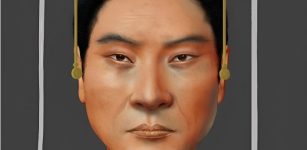 Facial Reconstruction Of Chinese Emperor Wu Who Lived 1,500 Years Ago
DNA | Mar 29, 2024
Facial Reconstruction Of Chinese Emperor Wu Who Lived 1,500 Years Ago
DNA | Mar 29, 2024 -
 On This Day In History: Johannes Kepler ‘Father Of Modern Astronomy’ Was Born – On Dec 27, 1571
News | Dec 27, 2016
On This Day In History: Johannes Kepler ‘Father Of Modern Astronomy’ Was Born – On Dec 27, 1571
News | Dec 27, 2016 -
 ‘Saimaluu-Tash’ Time Capsule: Largest Millennia-Old Collection Of Petroglyphs In Central Asia
Civilizations | Nov 20, 2018
‘Saimaluu-Tash’ Time Capsule: Largest Millennia-Old Collection Of Petroglyphs In Central Asia
Civilizations | Nov 20, 2018 -
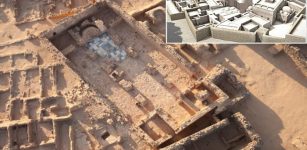 Virtual Nubia: Sudan’s Medieval Monasteries Digitally Reconstructed By Polish Archaeologists
News | Oct 8, 2020
Virtual Nubia: Sudan’s Medieval Monasteries Digitally Reconstructed By Polish Archaeologists
News | Oct 8, 2020 -
 Spectacular Vespasianus Titus Tunnel – An Ancient Roman Engineering Marvel
Ancient Technology | Aug 30, 2018
Spectacular Vespasianus Titus Tunnel – An Ancient Roman Engineering Marvel
Ancient Technology | Aug 30, 2018 -
 Neanderthals Buried Their Dead And Developed Spirituals Beliefs – Did Neanderthals Practice Religion?
Featured Stories | Dec 28, 2016
Neanderthals Buried Their Dead And Developed Spirituals Beliefs – Did Neanderthals Practice Religion?
Featured Stories | Dec 28, 2016 -
 Baba Yaga: Enigmatic, Powerful Archetypal Witch In Slavic Folklore
Slavic Mythology | May 16, 2016
Baba Yaga: Enigmatic, Powerful Archetypal Witch In Slavic Folklore
Slavic Mythology | May 16, 2016 -
 The Prophecy Of The Rainbow Warriors And Future Of Planet Earth
Featured Stories | Aug 29, 2018
The Prophecy Of The Rainbow Warriors And Future Of Planet Earth
Featured Stories | Aug 29, 2018 -
 Ancient Mesopotamian City Lagash Reveals More Archaeological Secrets
Archaeology | Jan 25, 2023
Ancient Mesopotamian City Lagash Reveals More Archaeological Secrets
Archaeology | Jan 25, 2023 -
 Nemesis: Winged Goddess Of Justice And Revenge
Featured Stories | Jun 2, 2016
Nemesis: Winged Goddess Of Justice And Revenge
Featured Stories | Jun 2, 2016


